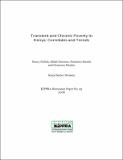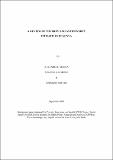Does the Poverty Level Minimum Basket Adequately Inform the Scope of Governments’ Poverty Reduction Strategies?
| dc.contributor.author | Ngugi, Rose W. | |
| dc.contributor.author | Munga, Boaz O. | |
| dc.contributor.author | Kiiri, Phares P. | |
| dc.contributor.author | Onsomu, Eldah N. | |
| dc.date.accessioned | 2023-04-18T13:44:21Z | |
| dc.date.available | 2023-04-18T13:44:21Z | |
| dc.date.issued | 2023 | |
| dc.identifier.uri | https://repository.kippra.or.ke/handle/123456789/4153 | |
| dc.description.abstract | Appropriately guided and implemented government interventions help in achieving the desired out-come. They complement the household budget in meeting their basic needs, allowing them to move to a higher satisfaction level. The study looks at the nexus between house hold poverty and government strategies to stem it. The analysis uses various approaches including the binary and polychotomous logit models to see who is likely to benefit from the interventions, the Tobit model to measure the intensity in closing poverty gap and simulations to capture the impact and cost implications of interventions. While several interventions were introduced, results reveal implementation gaps where the deserving households are not comprehensively covered; the extremely poor have lower probability of uptake of the interventions. Thus, more targeted coverage is necessary in closing the poverty gap. | en |
| dc.language.iso | en | en |
| dc.publisher | Journal of African Economies | en |
| dc.relation.ispartofseries | Journal Article;2023 | |
| dc.subject | Poverty alleviation | en |
| dc.subject | Transfers | en |
| dc.subject | Safety | en |
| dc.title | Does the Poverty Level Minimum Basket Adequately Inform the Scope of Governments’ Poverty Reduction Strategies? | en |
| dc.type | Article | en |
Files in this item
This item appears in the following Collection(s)
-
Journal Articles [31]




